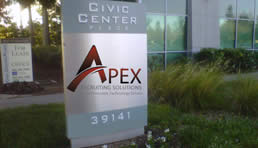




This time next year, Ken Evans, CEO of Konexial, expects the industry-wide sentiment regarding the electronic logging device (ELD) mandate will be: “Why in the world were we afraid of this?”
But right now – and even before the mandate officially went into effect Dec. 18 – that’s not exactly the case. Evans believes certain organizations and politicians have created an environment of noise and uncertainty around ELDs that generated an unnecessary fear among small carriers and owner operators.
“That fear led to people not acting quickly enough,” he explained. “I think that if you look at the market since the mandate went into effect Dec. 18, what I’ll tell you is that of carriers that have say 20 or fewer trucks, I don’t think half of them are compliant right now.”
Part of the reason Evans said he feels small carriers and independent drivers have yet to comply with the mandate is because of what has been publicized as the April 1 “hard enforcement” date.
Carriers can still be given citations for hours of service (HOS) violations, but the Federal Motor Carrier Administration (FMCSA) has maintained that they will not be put out of service for not having an ELD before April 1.
“We talk to people every day who think they can wait until March 30 to make a decision,” Evans pointed out. “And we try to educate them and tell them, ‘No, you can get a ticket today.’ We see people getting tickets every day. People need to go ahead and put this in because there is a learning curve. We encourage people to get out in front of it.”

Ken Evans is the CEO of Konexial, which offers an ELD product and dynamic load-matching platform to carriers and independent drivers.
Evans runs Konexial, one of the 200 ELD providers on FMCSA’s certified list. But Konexial’s product goes a step further than offering just an ELD to track hours of service. Built into the product is a My20 app, which offers users “dynamic load matching” opportunities.
Dynamic load matching informs drivers of available loads based on location, hours of service, and economic criteria – like calculating fuel prices in real time. The app will not provide load-matching opportunities to carriers unless they have available hours to perform, Evans stressed. He also noted the platform solves the three biggest problems a carrier has in transportation: fuel costs, detention time, and payment charges.
Evans stressed that if the industry isn’t fully compliant sooner than later, there will be massive hardware shortages and not enough components in the supply chain to handle everyone who’s going to need an ELD come March.
“I believe that a year from now, anybody who is out there openly defying the law is just going to get shut down, and that’s fine,” he noted. “But I think that those people who are professionals and who are serious about their job and their safety, once they get over the [ELD] learning curve, they won’t want to go back.”
“One of the things I’m concerned about is that there are 200 other companies on the FMCSA list and a lot of them will not be here a year from now because of noncompliant products,” Evans added. “The market doesn’t need 200 companies. Part of my concern is that people have made decisions and will have to go back and redo those decisions. I think there will be a shakeout of the provider list for sure.”

Screenshot of Konexial’s dynamic load-matching app for carriers and owner operators.
The Owner Operator Independent Driver Association (OOIDA) recently filed a substantial exemption request for small businesses that earn less than $27.5 million in annual revenue and that do not have an unsatisfactory safety rating. Evans said there is “zero chance” that will go through.
“With all due respect, that’s misguided,” he explained. “What people forget is this is not something that is even in the purview of the executive branch. This is a law that has been passed by Congress. This is not something that [Transportation] Secretary Chao or President Trump can change at the stroke of a pen; it’s just not possible.”
During a recent FTR State of Freight webinar on ELD implementation, Avery Vise, FTR’s vice president of trucking research, explained that Congress has barred the FMCSA from using ELD-standard data for any other purpose than ensuring HOS compliance.
However, when inspectors are conducting compliance reviews, FMCSA eventually would be able to retrieve the data from carrier GPS systems and match that against HOS logs and other things – for instance, speeding, Vise noted.
“So this is essentially a big deal,” he emphasized. “It’s not a reason to not use the data – many carriers have a good reason they need to use the data for other purposes – what it does mean is that you need to pay attention to speed because unless you are strictly limiting yourself to ELD uses, you are now, if you did not use GPS before, more accountable for speed than you probably thought you were.”
Questions that came up in the litigation between OOIDA and FMCSA were: Can law enforcement use this directly as opposed to using it in a compliance review, and could the data be pulled at the roadside in order to impute a speeding ticket based on data, not on a radar gun?
Clay Slaughter, senior analyst at FTR, noted that opportunity might be out there, but for city and county law-enforcement personnel, he said he believes that argument is weaker.
“They aren’t barred by that prohibition or that safe harbor,” he explained. “So I think that would be an opportunity for those sophisticated departments to be able to use.”
Slaughter also pointed out that in general fleets should still have a good understanding of what that data is that their ELDs are collecting, particularly how they’re using and storing the data, which could end up becoming available to others.
“I wouldn’t be surprised in future years for insurance companies to seek that data and make premium adjustments to make business decisions based on the data you’re getting,” he noted.
And that insurance element is something the folks at Konexial are keeping their eyes on as well.
“What insurance companies definitely could do [and do now], is if you can put a data collector on your car and it proves you’re a safe driver, they can offer you a reduction,” Evans explained. “So I think that’s the more likely avenue this would go down.”